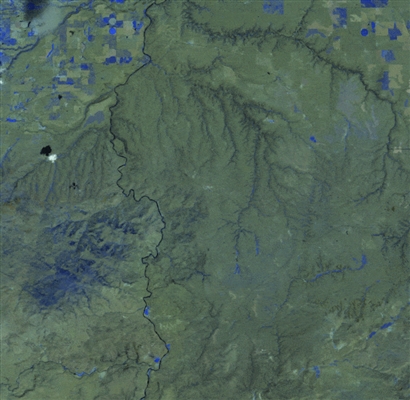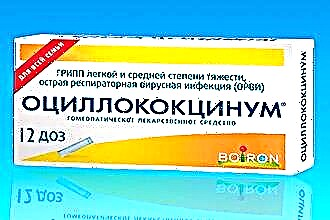An increase in the mass and volume of the heart muscle indicates a violation of its work. A problem arises, mainly due to the development of diseases of the cardiovascular system. In medicine, this pathological process is called "bovine" heart or cardiomegaly. During the examination of the patient, the specialist conducts an examination and prescribes all the necessary tests to clarify the diagnosis and draw up a treatment regimen. The patient remains to study the possible causes of the development of cardiomegaly and its inherent symptoms in order to be able to provide timely assistance and consult a doctor.
Features of pathology
 Bovine heart syndrome can be congenital or acquired. In the first case, the presence of pathology is detected if the baby's heart muscle volume is more than 3x4x1.8 cm (length, width, thickness). In adults, the diagnosis of "cardiomegaly" is made when values are higher than 11x11x8.5 cm. The permissible heart mass during life varies (from 25 to 230 g).
Bovine heart syndrome can be congenital or acquired. In the first case, the presence of pathology is detected if the baby's heart muscle volume is more than 3x4x1.8 cm (length, width, thickness). In adults, the diagnosis of "cardiomegaly" is made when values are higher than 11x11x8.5 cm. The permissible heart mass during life varies (from 25 to 230 g).
Babies can only have a congenital bovine heart. It is rarely detected, has a predominantly negative prognosis. According to statistics, every 2 children survive. Of these, 25% will suffer from left ventricular failure. Approximately every 3 babies die before they reach 3 months. Due to the strong hypertrophy of the walls and chambers, the mass of the heart exceeds the permissible limits by 2 or more times. Pathology can even be diagnosed in the fetus during an ultrasound examination. A child born with cardiomegaly often suffers from shortness of breath, heart palpitations, and frequent infectious diseases.
If a "bovine" heart is identified in a person in adulthood, then we are talking about an acquired form. It arises from the effects of various pathologies of the cardiovascular system. However, in professional athletes, an enlarged heart muscle speaks of general muscle growth against the background of intense training, and not of pathology. The essence of its growth lies in the increased nutritional requirements of tissues due to heavy physical exertion. The heart works harder, and like any other muscle, it increases in size.
An enlarged heart without pathologies can be in people with a hypersthenic body type. Their body weight is greater than that of normostenics and asthenics, respectively, the size of their organs is slightly higher than normal.
This reason for the growth of the heart muscle does not apply to people who are obese. They are often confused with hypersthenics.
The "bull" heart in humans has similar features with other heart diseases, for example, with myocardial hypertrophy. But with cardiomegaly, the volume and mass increase due to the simultaneous thickening of the walls and expansion of the chambers. For myocardial hypertrophy, only an increase in one of the atria or ventricles (mainly the left one) is characteristic.
Causes of the congenital form
The development of the "bull" heart in babies is influenced by the following factors:
- congenital defects;
- genetic predisposition;
- Ebstein's anomaly.
Much depends on the condition of the mother and her behavior during pregnancy:
- transferred infectious diseases;
- abuse of bad habits (alcohol, cigarettes, drugs);
- environmental impact;
- taking medications;
- poorly formulated diet;
- injuries sustained.
The reasons for the acquired form
 The "bull" heart in a person in adulthood is formed under the influence of heart disease and other pathologies. The first category includes:
The "bull" heart in a person in adulthood is formed under the influence of heart disease and other pathologies. The first category includes:
- Valve defects that impair blood flow due to congenital abnormalities, putting additional stress on the heart.
- Hypertonic disease. It creates disruptions in the blood flow due to vascular resistance.
- Viral myocarditis, which is characterized by inflammation of the heart muscle. It is caused by the systematic consumption of alcoholic beverages in large quantities.
- Cardiomyopathy. It is manifested by a thickening of the heart muscle, mainly due to endocrine (hormonal disruptions).
- Neoplasms such as rhabdomyomas and myxomas, which alter the structure of the heart and increase its mass.
- Arrhythmias of the heart. They lead to his hypertrophy. Failures occur due to impulse conduction disturbances.
- Cardiac ischemia, which is manifested by cardiomegaly due to compensation for nutritional deficiencies.
- Atherosclerosis. It clogs the coronary arteries, causing the heart to activate a compensatory mechanism.
- Pulmonary heart, which is a consequence of increased pressure in the pulmonary circulation.
Among other pathologies that affect the development of cardiomegaly, the most common ones can be distinguished:
- Diabetes. It manifests itself due to poor production of insulin (a hormone that transports sugar) or its poor absorption by the cells of the body. Pathology is characterized by a high level of glucose, which has an adverse effect on the cardiovascular system. A person develops atherosclerotic plaques in the vessels, contributing to the development of ischemia of the heart and hypertrophy of its tissues.
- Cardiomyodystrophy. It develops due to malnutrition, anemia, excess body weight and other factors. It tends to increase several or all cameras at the same time, as compensation.
- Anemia. It is manifested by the accelerated work of the heart muscle, due to which its insufficiency and hypertrophy develops.
- Diseases of the thyroid gland. They cause hormonal disruptions that disrupt the work of the heart.
Sometimes a "bull" heart in a person occurs due to prolonged use of certain medications (cardiotoxic and antitumor):
- "Methyldopa";
- Daunorubicin;
- Idarubicin;
- Novocainamide;
- "Adriamycin".
Cardiomegaly develops under the influence of pathologies or medications for a long time. Patients can detect it at an early stage, for example, during an annual examination, and stop the pathological process without much harm to the body.
Clinical picture
"Bullish" heart in a person involved in sports or having a hypersthenic physique does not appear. Such an increase is not at all considered a pathology. If the development of the disease is provoked by other factors, then the clinical picture may be as follows:
 general weakness;
general weakness;- fast fatiguability;
- shortness of breath after any physical activity and at night;
- tachycardia attacks;
- abdominal growth due to the development of ascites;
- heaviness in the right side of the chest;
- bulging of the cervical veins;
- swelling of the lower extremities.
Symptoms predominantly indicate heart failure. A complete examination will help to accurately diagnose and identify the cause of the increase in heart size.
The congenital form of cardiomegaly is more difficult to detect in a timely manner due to the lack of an opportunity to find out from the child what worries him. Parents need to pay attention to the following nuances:
- the presence of shallow rapid breathing;
- pale skin color and blue around the lips;
- decreased appetite;
- the occurrence of edema;
- excessive sweating;
- tachycardia.
Therapy methods
The "bull" heart of a person cannot be completely cured. The course of therapy is aimed at reducing the load on the heart muscle, treating the underlying pathological process and maintaining the general condition in normal conditions. With timely detection, it is possible to stop the development of pathology with the help of conservative treatment methods. In advanced situations, surgical intervention will be required.
Conservative treatment
A patient suffering from a "bull" heart will have to change their lifestyle:
- reduce physical activity;
- give up cigarettes and alcoholic beverages;
- lose weight;
- get enough sleep (at least 6-8 hours a day);
- reduce the salt content in food;
- do not drink more than 2 liters. fluids per day;
- enrich the diet with vegetables and fruits;
- reduce the amount of animal fat consumed.
The treatment of cardiomegaly should include medications aimed at stopping the development of heart failure:
- Beta-blockers. They reduce the effect of adrenaline on the heart, stabilize blood pressure and pulse.
- Diuretics They remove moisture from the body, preventing the development of edema.
- ACE inhibitors. They stimulate the pumping function of the heart muscle and dilate blood vessels.
- Anticoagulants. They prevent blood clots from developing.
Surgical intervention
 If there is no result from conservative treatment, the doctor will recommend surgery. Its purpose is to eliminate defects in the structure of the heart and improve its nutrition. It will not be possible to completely cure the pathology, but it will be possible to prolong the patient's life and eliminate the main provoking factor.
If there is no result from conservative treatment, the doctor will recommend surgery. Its purpose is to eliminate defects in the structure of the heart and improve its nutrition. It will not be possible to completely cure the pathology, but it will be possible to prolong the patient's life and eliminate the main provoking factor.
The following types of operations are most often used:
- Installation of artificial heart valves.
- Restoration of blood flow in coronary vessels using shunts.
- Installing a pump in the left ventricle (with severe heart failure).
- Mounting a pacemaker or defibrillator to monitor heart rate.
Forecast
Congenital cardiomegaly has no reassuring prognosis. Many babies do not even live up to 3 months. Every second child recovers, but there is a chance that he will develop heart pathologies in the future.
Treatment of the acquired "bovine" heart depends on the cause that triggered its development. In heart failure caused by dilated cardiomyopathy, cardiomegaly can progress to an advanced stage in 3 years, lead to disability or death. In other cases, the disease can develop without symptoms for decades, if you change your lifestyle and follow all the doctor's recommendations.
Cardiomegaly in adults develops due to the influence of various pathologies. The treatment is based on lifestyle correction, elimination of the main pathological process and reduction of the load on the heart. It is equally important to try to protect yourself as much as possible from irritating factors that can cause high blood pressure, ischemia and lung disease. The preparation of a therapy regimen should be entrusted to a cardiologist, since self-medication can harm health and aggravate heart failure.

 general weakness;
general weakness;

